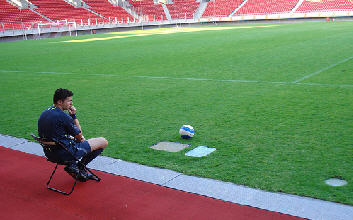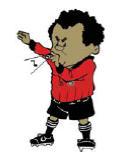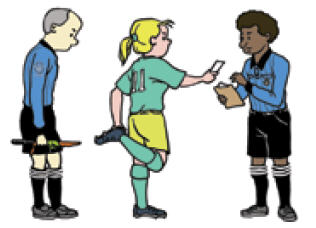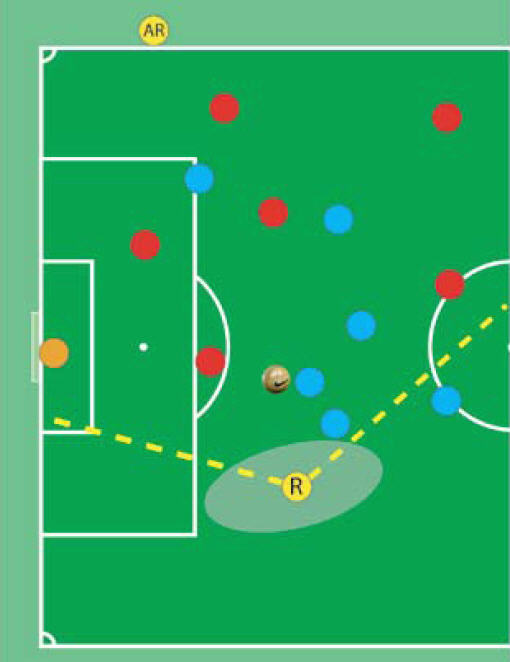Arrive Early - The referee team needs to be at the field at least 30 minutes prior to the match.
That means you need to take in mind how long it will take you to get there and to get your stuff together and get to the field.
This takes practice and planning.


Before you get to the field -
Avoid getting dressed at the field.
This shows a lack of preparation.
Come to the park almost ready to go.
Have your shorts and socks already on.
That way when you get there and see what colors the teams are wearing or the other referees that may already be on the field, you can finish dressing at the car.
This allows you to walk onto the field looking like a referee.
Whenever practical, all the referees should enter the field at the same time ready to officiate (i.e., fully dressed).
While every official must develop his or her own style of conduct, it is the objective of the Guide to Procedures to keep such individual styles within a common boundary of standard practices


Whistle
- Referees are reminded that the whistle is a tool of communication and not merely a convenient signaling device. Whistles should be selected carefully for the match conditions, age of players and other factors. It is neither required not expected that the whistle be used for all stoppages and restarts of play
- A whistle demands attention and should be blown when such attention is needed. Uncontested stoppages (as when a ball clearly leaves the field) should not be whistled - a voice and/or hand signal by the referee or flag by the assistant referee will normally be sufficient
- Referees should also be alert to the need for variations in the length, force and tone in their use of a whistle to indicate different types of stoppages or different degrees of concern for the event that has just occurred

Click on this picture for a video about proper use of the whistle

Signals
- All referee hand signals are given with the arm straight at the indicated angle or direction, with the fingers fully extended

Care should be therefore taken in the use of such gestures or expressions


Click on this picture for a video about referee positioning
Each official must be able to rely upon the other members of the team to perform their duties in a timely, accurate, and responsible manner.
In turn, each official should be given full opportunity to perform the tasks described in the Guide to Procedures and in the pregame conference
General Positioning - During Play
Referee
- Position flexible, using the diagonal system of control
- Follows positions diagram guidelines during play and at restarts but uses discretion to choose alternate positions when needed
- Able to observe active play and lead assistant referee
- Remains close enough to observe important aspects of play without interfering with player or ball movement
- Understands that attention may be needed elsewhere on the field to monitor behavior of specific players not actively involved with playing the ball
Remember: The best position is one that is flexible and intelligent based on observed or known player tactics and team strategies!
Three conditions for best position:
A = I can see play and the potential problem area
B = I can see my AR
C = I am not occupying space the players need


Injuries
Referee
- Makes quick assessment of seriousness
- Returns to position if not serious
- Gives teams opportunity to stop play by sending ball off the field (sportsmanship)
- Stops play if injury is serious and notes location of ball for restart
- Signals for team official, trainer or other medical assistance to enter the field
- Confers with assistant referees, if necessary, to determine events leading to injury
- Stays out of the area where the injured player is being attended to
- Monitors time lost
- Encourages timely restarts consistent with the safety of the injured player